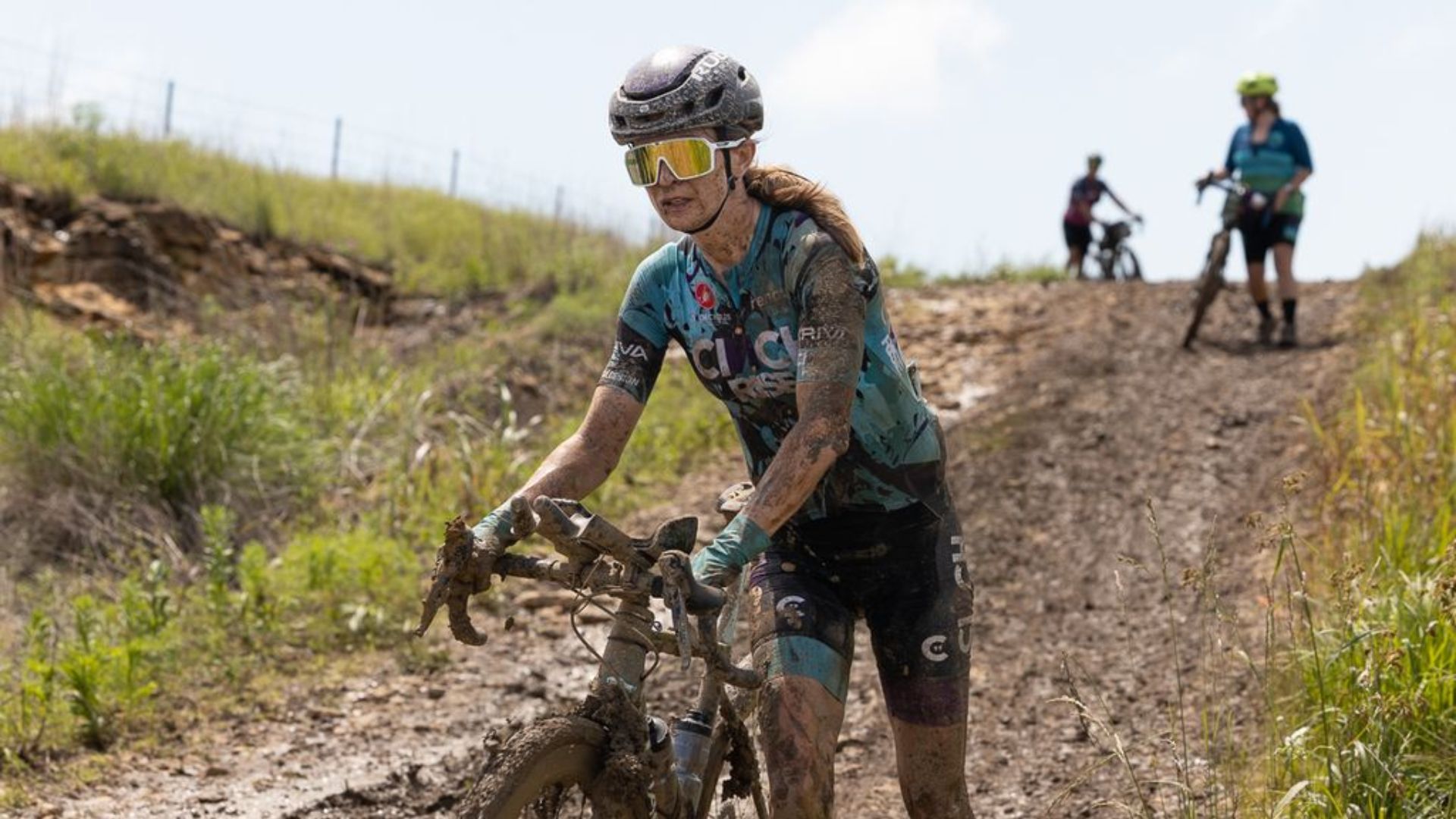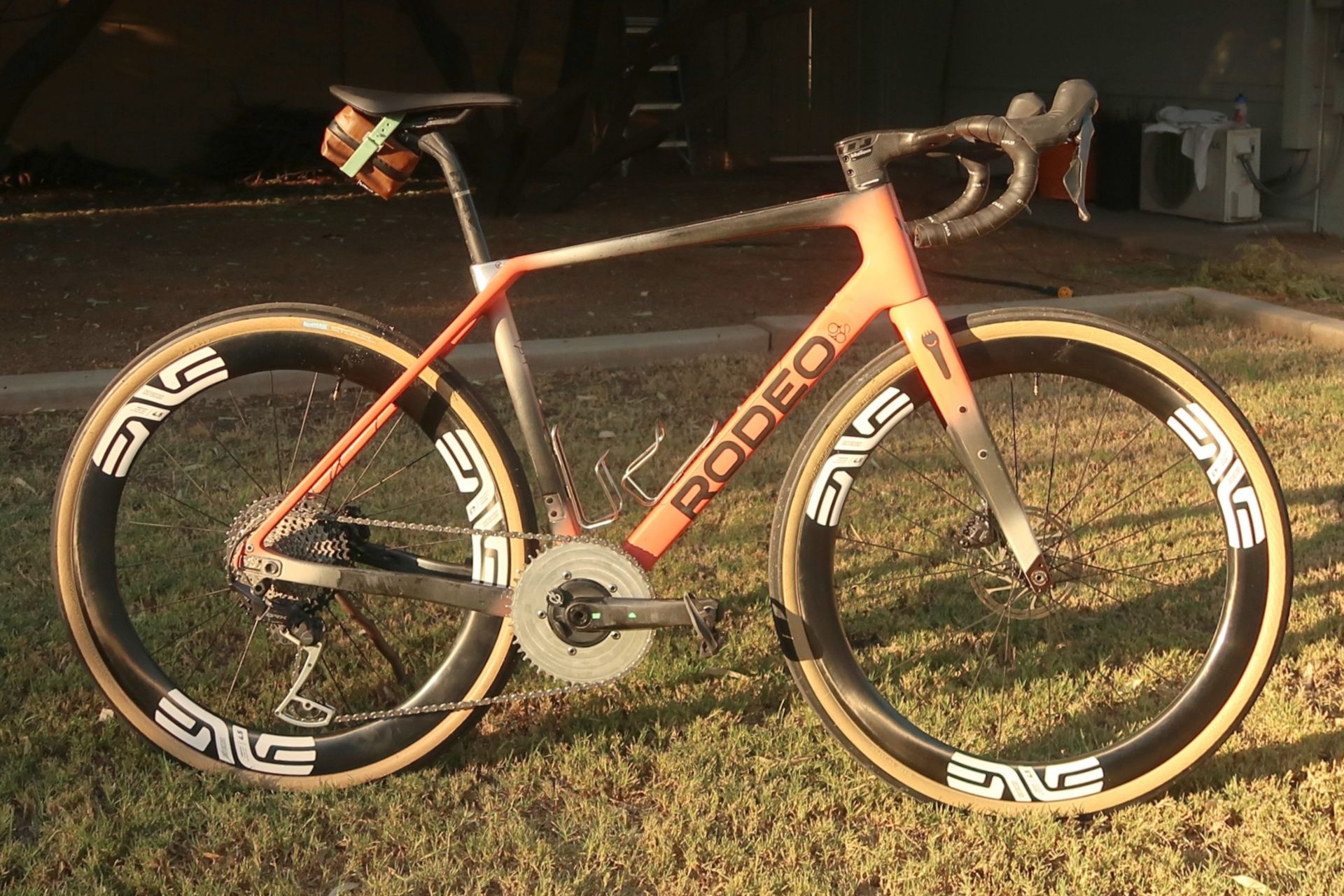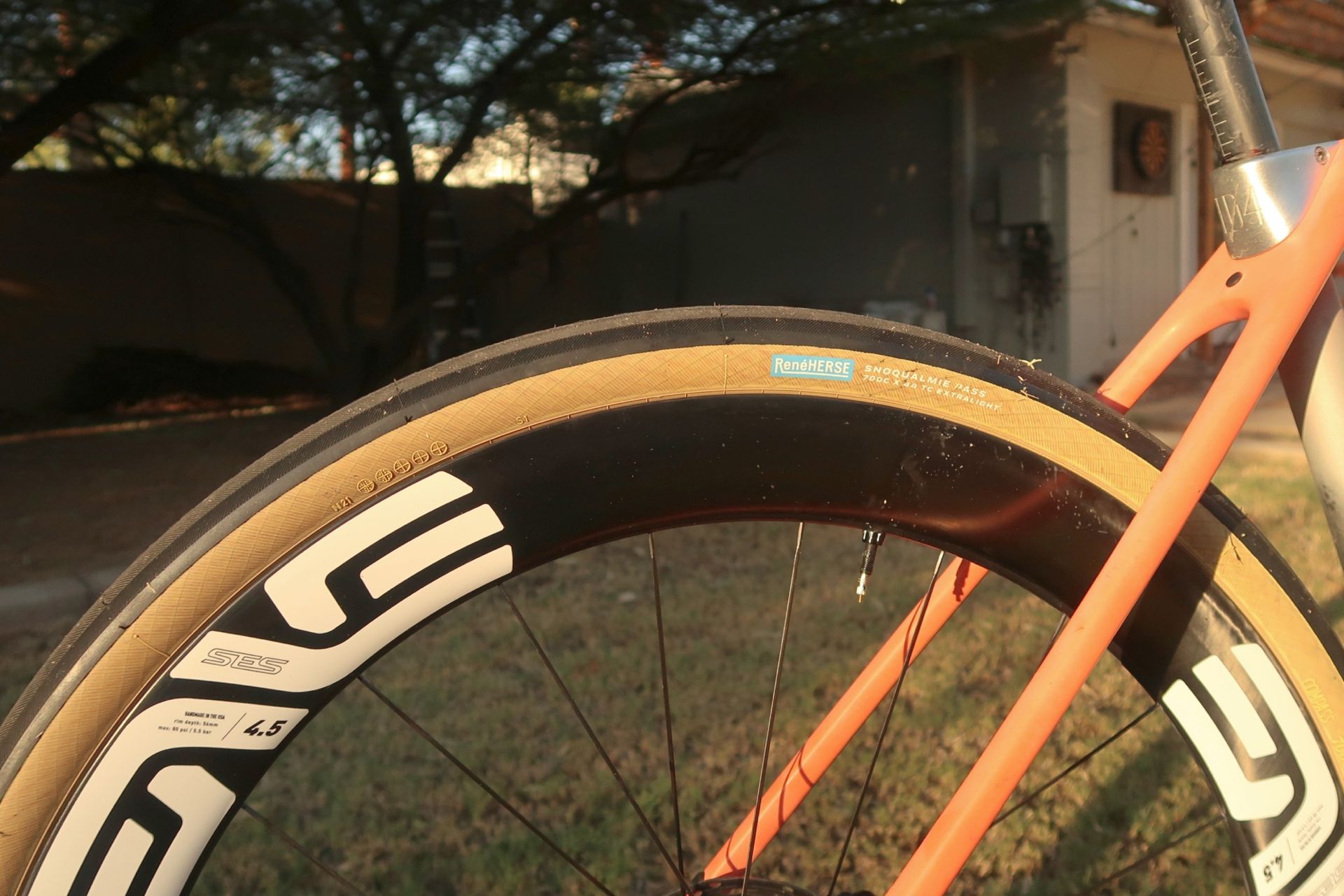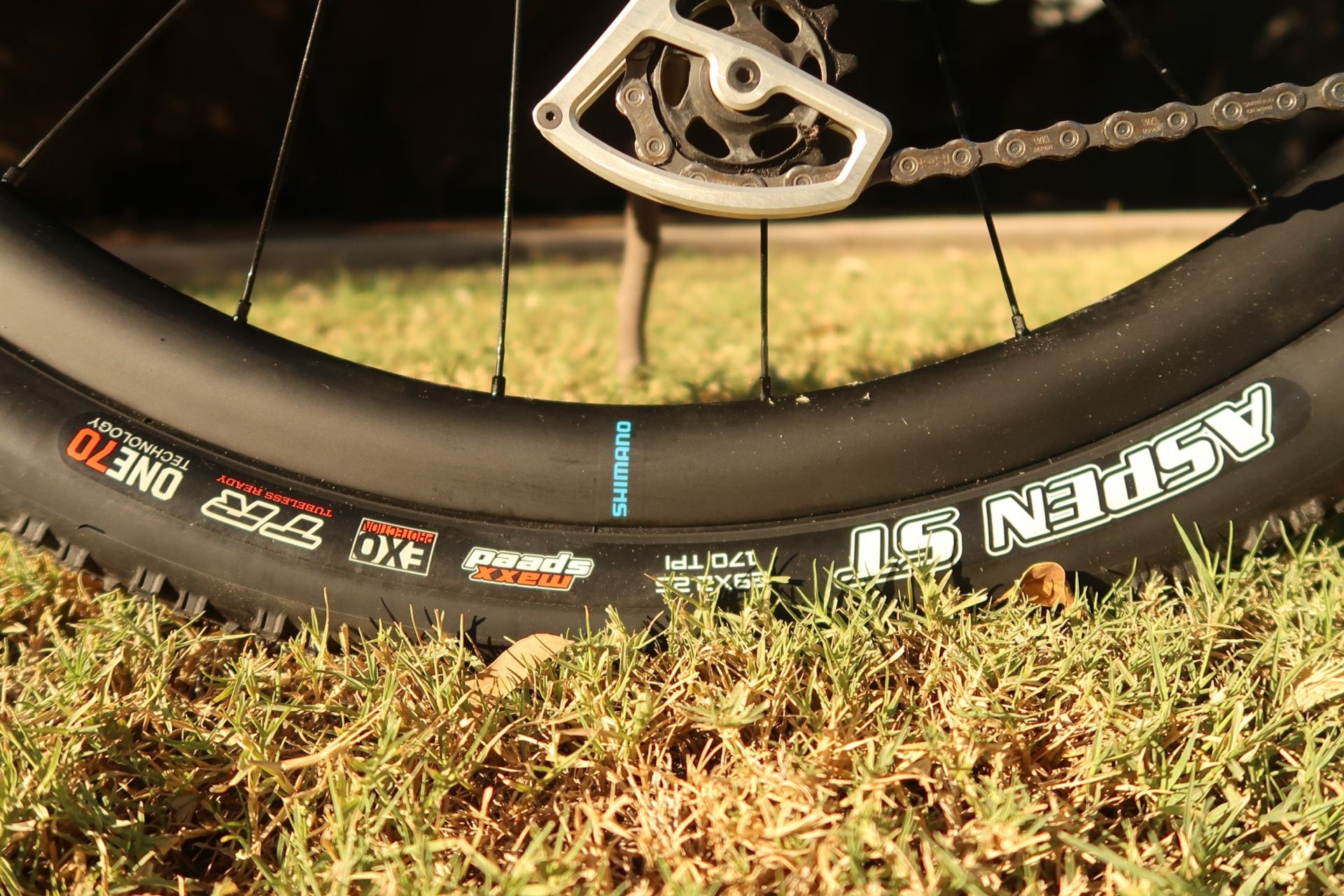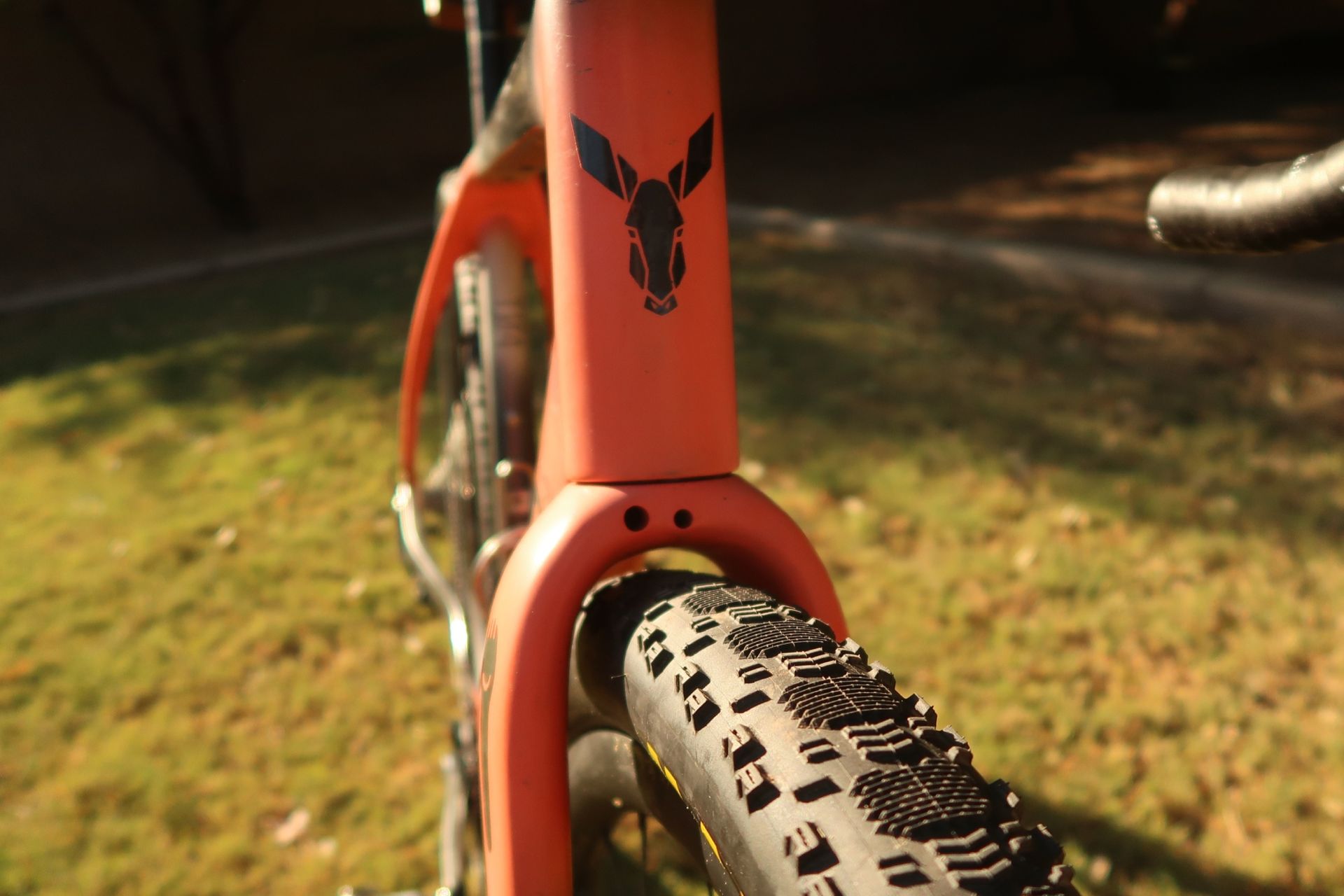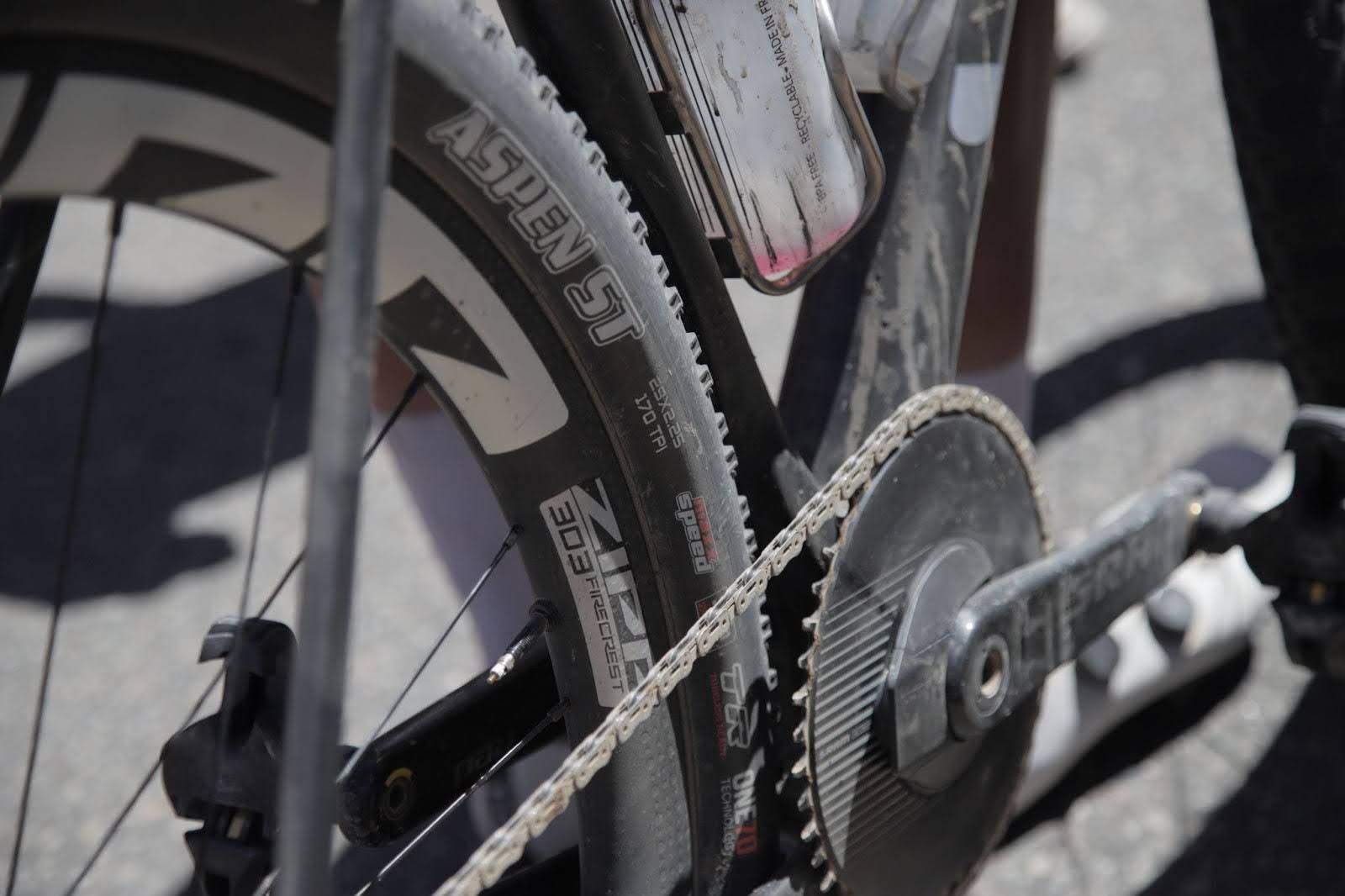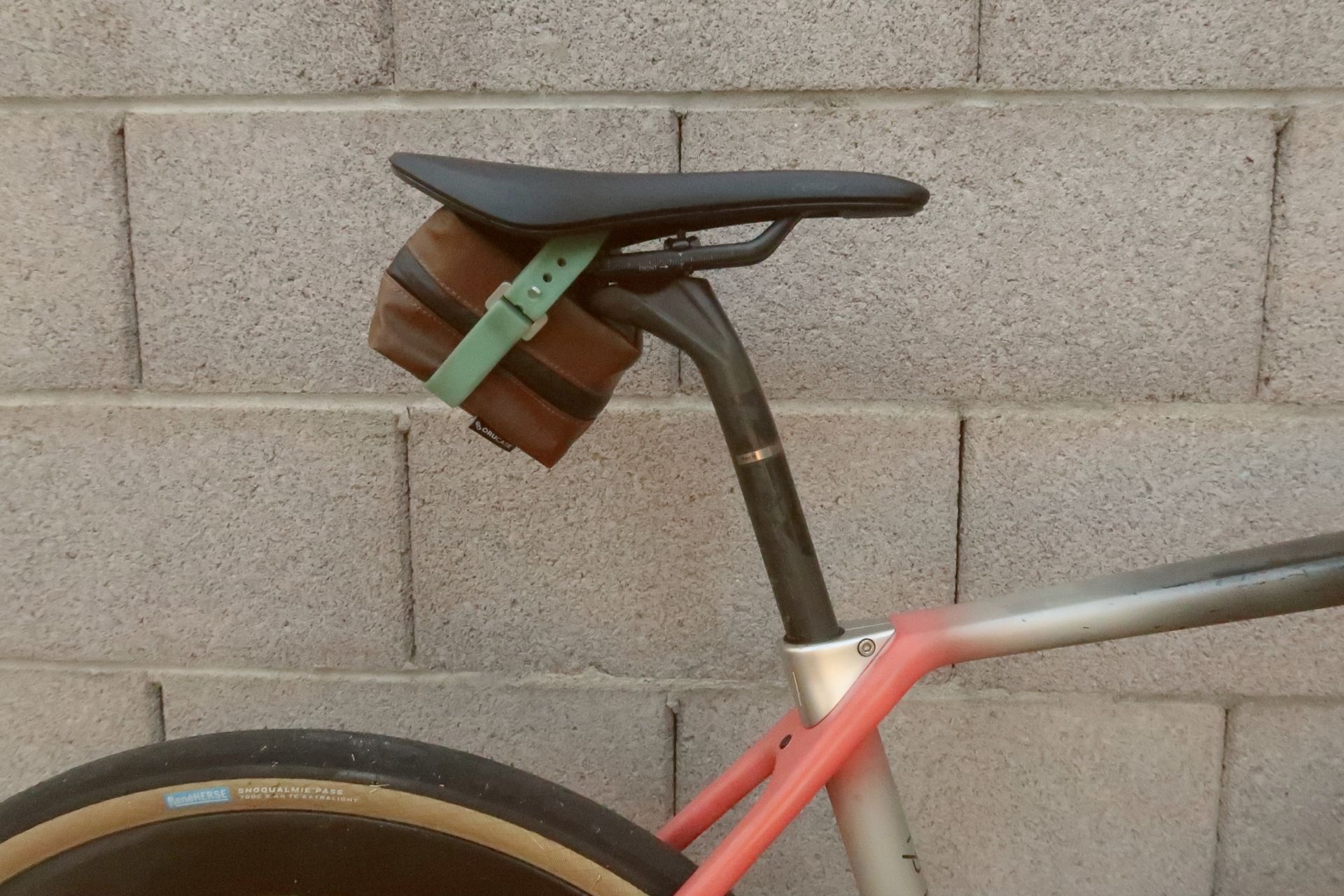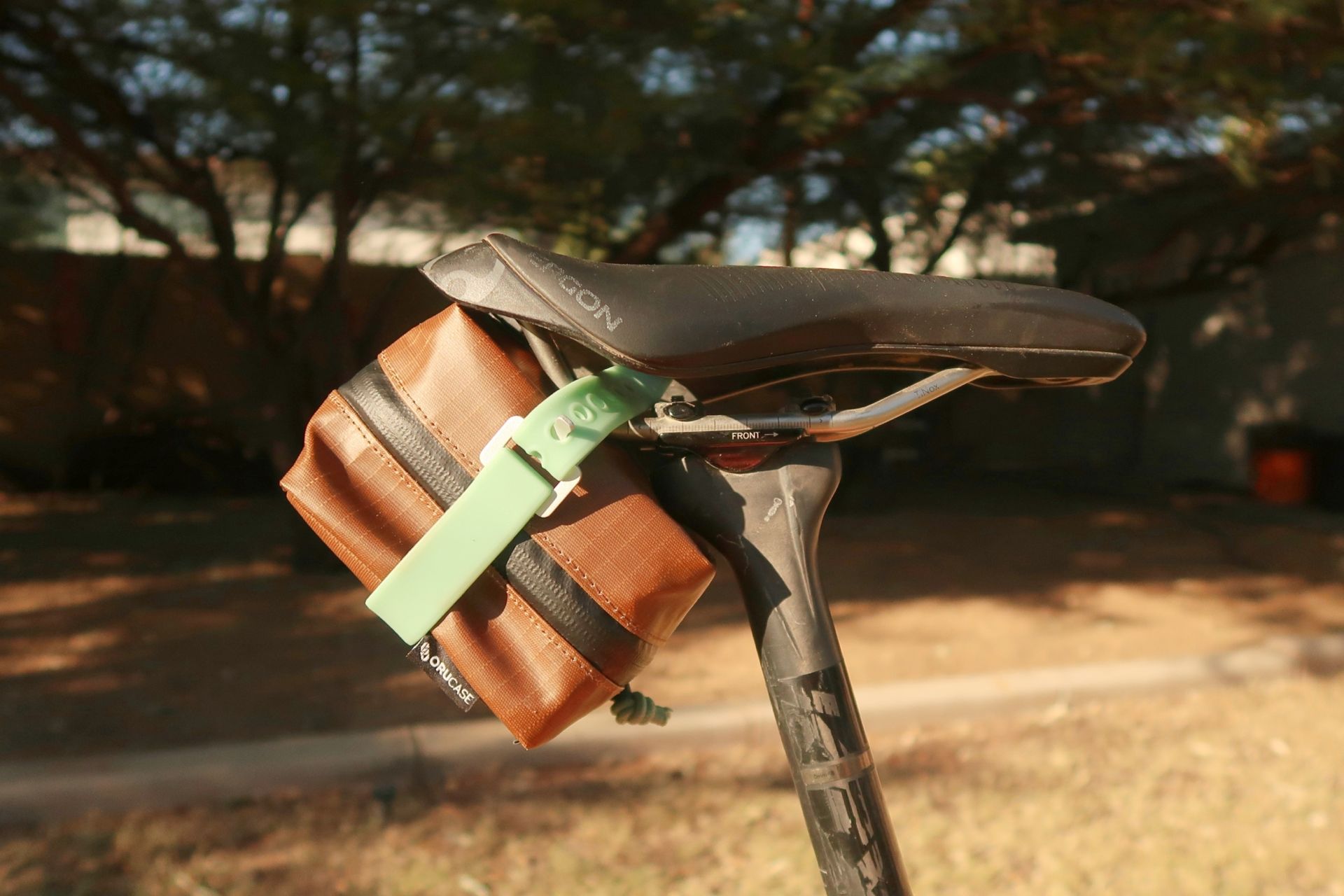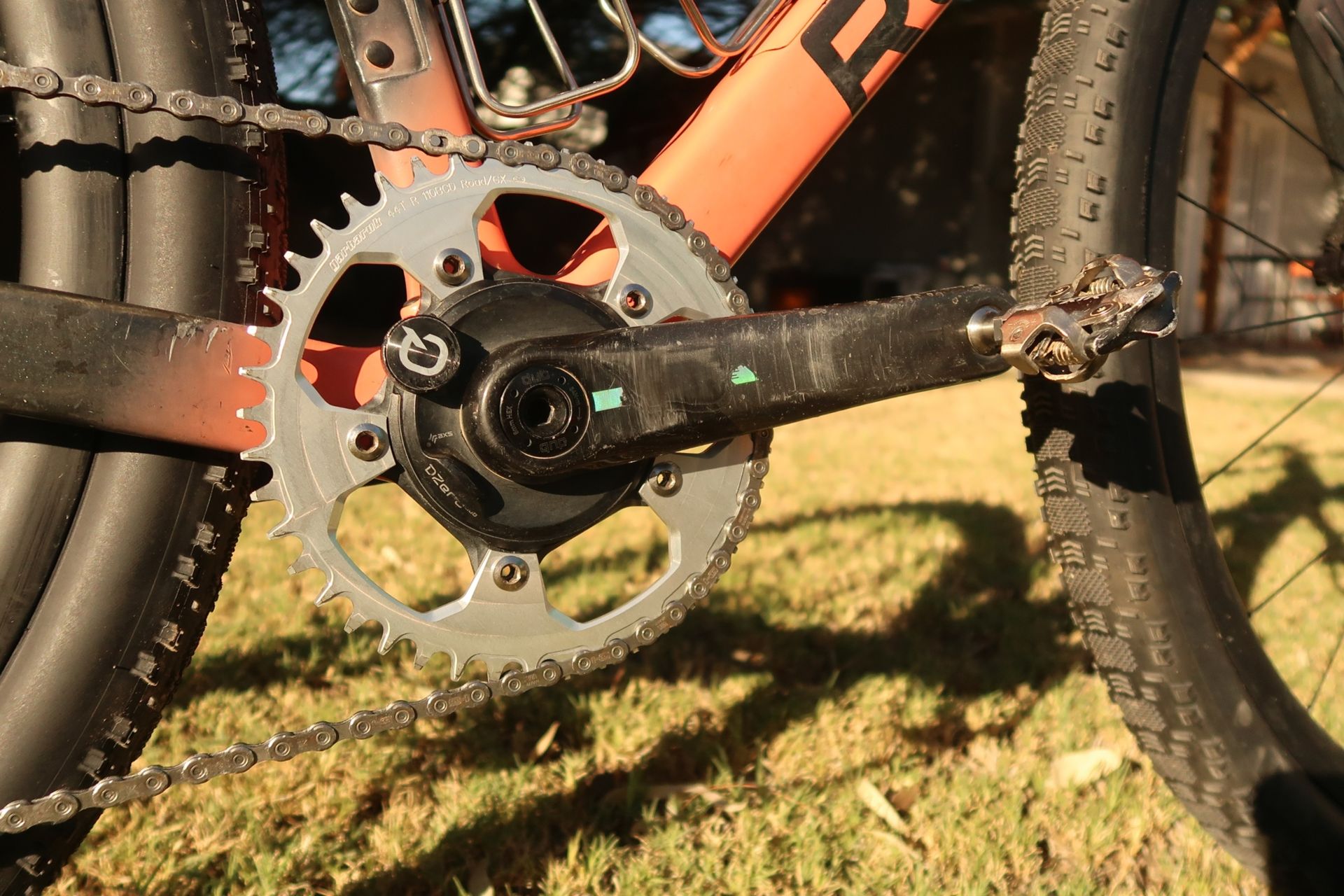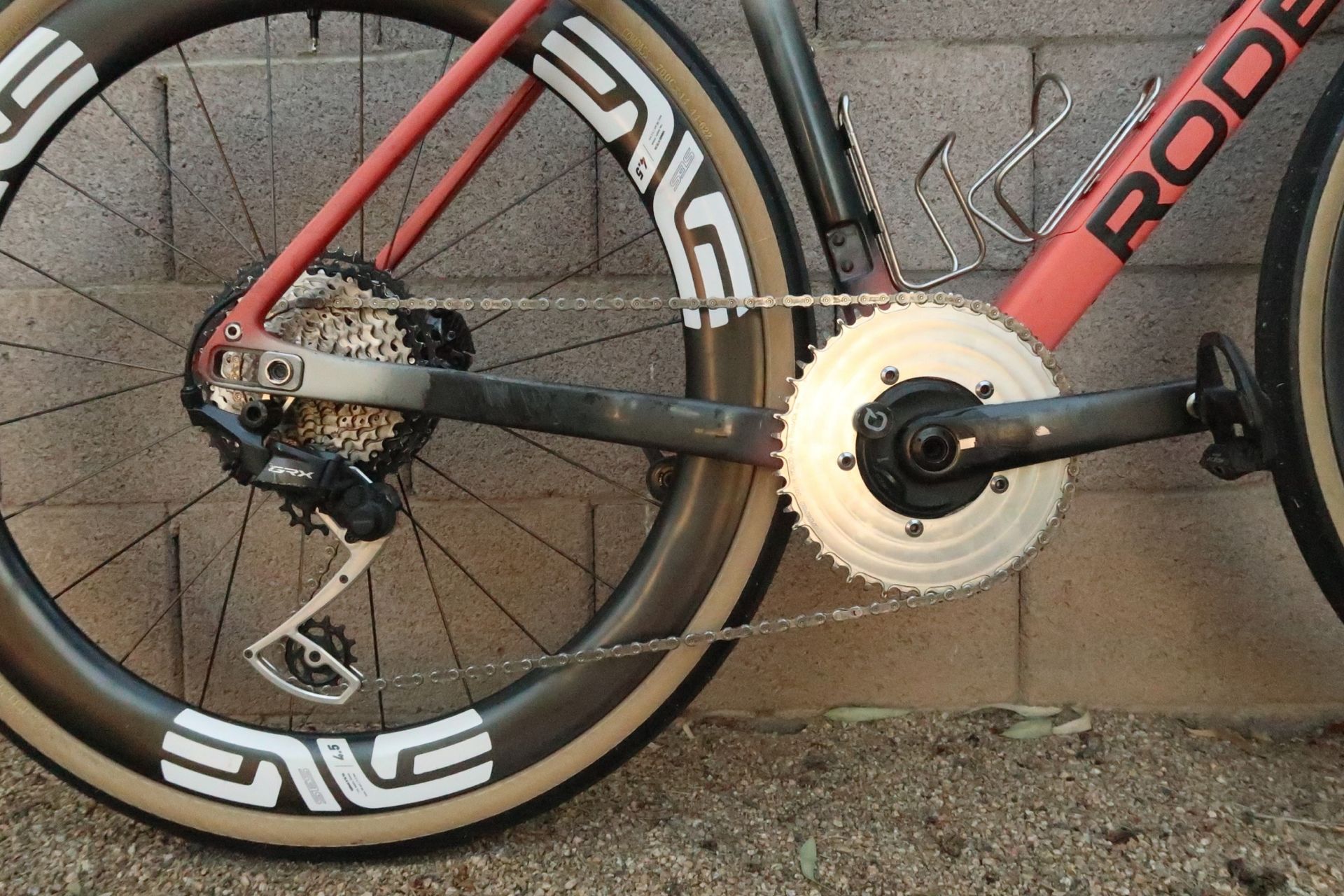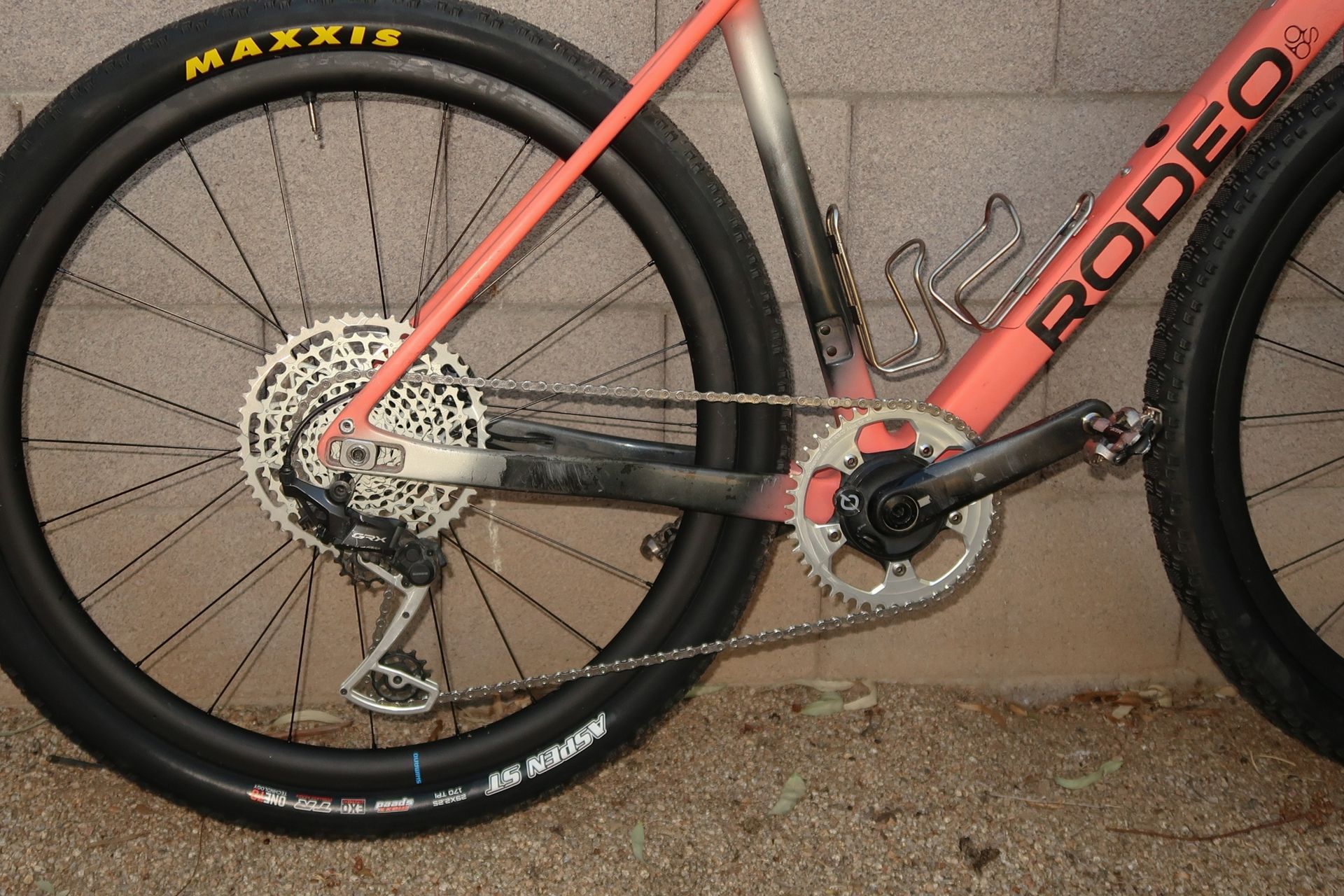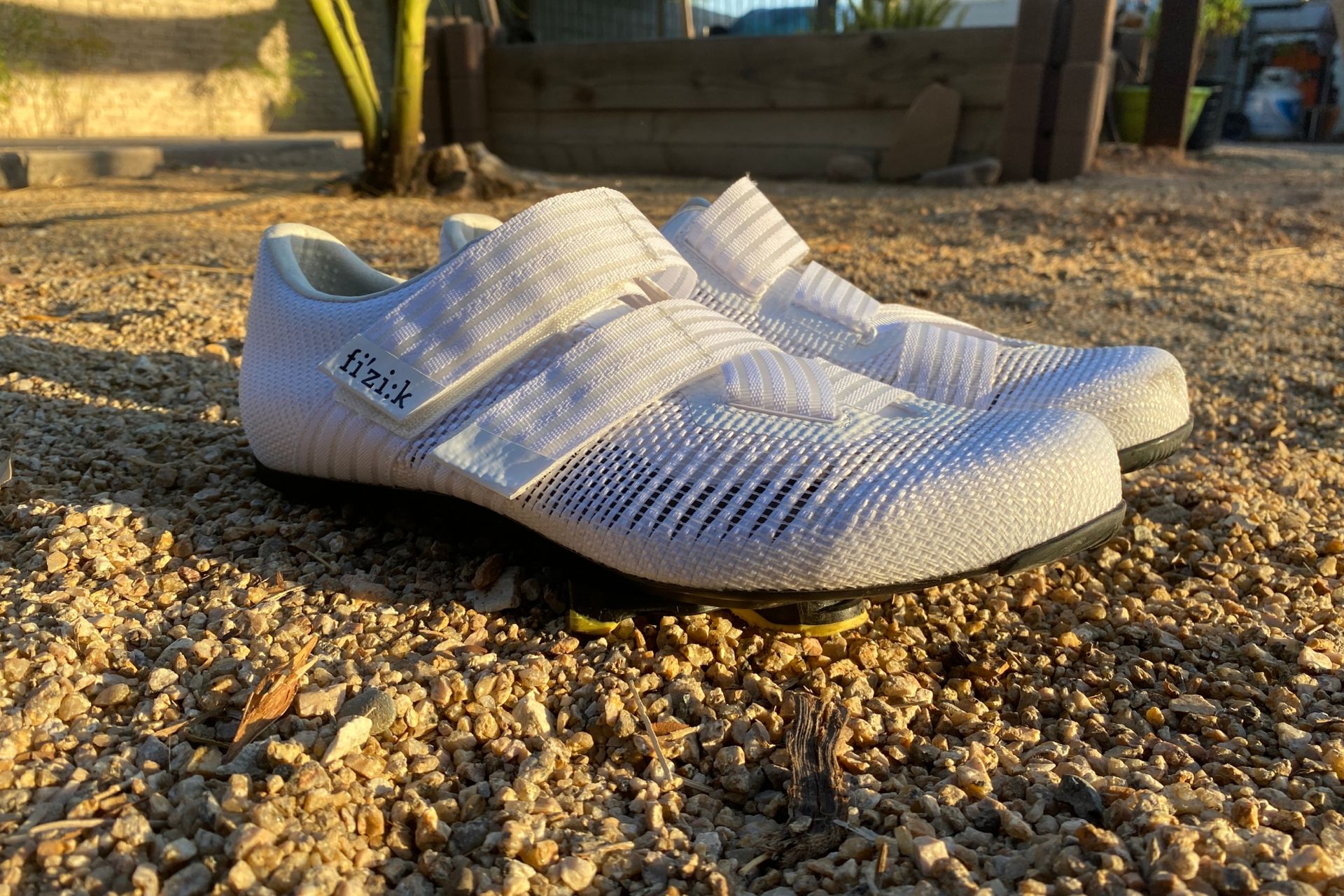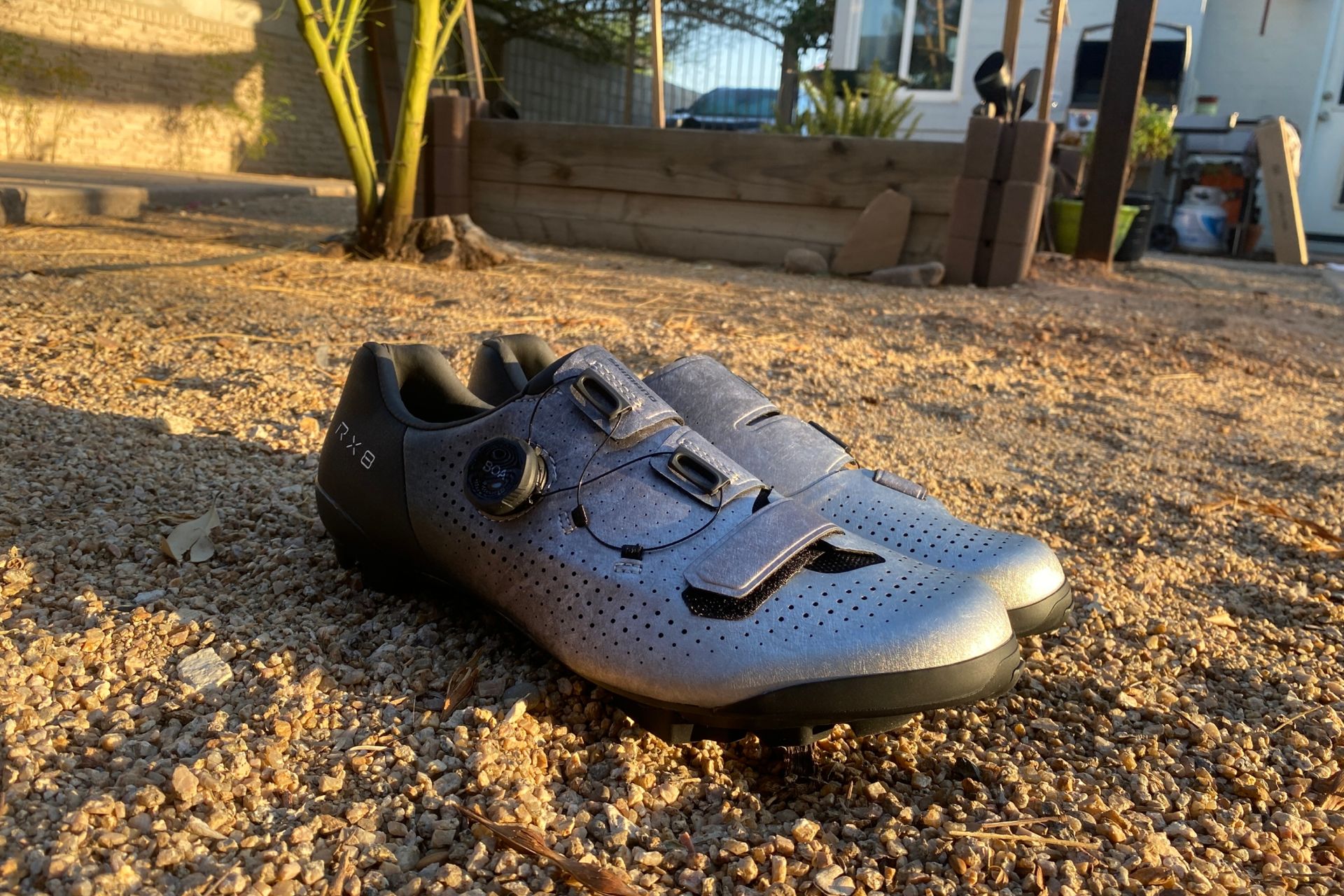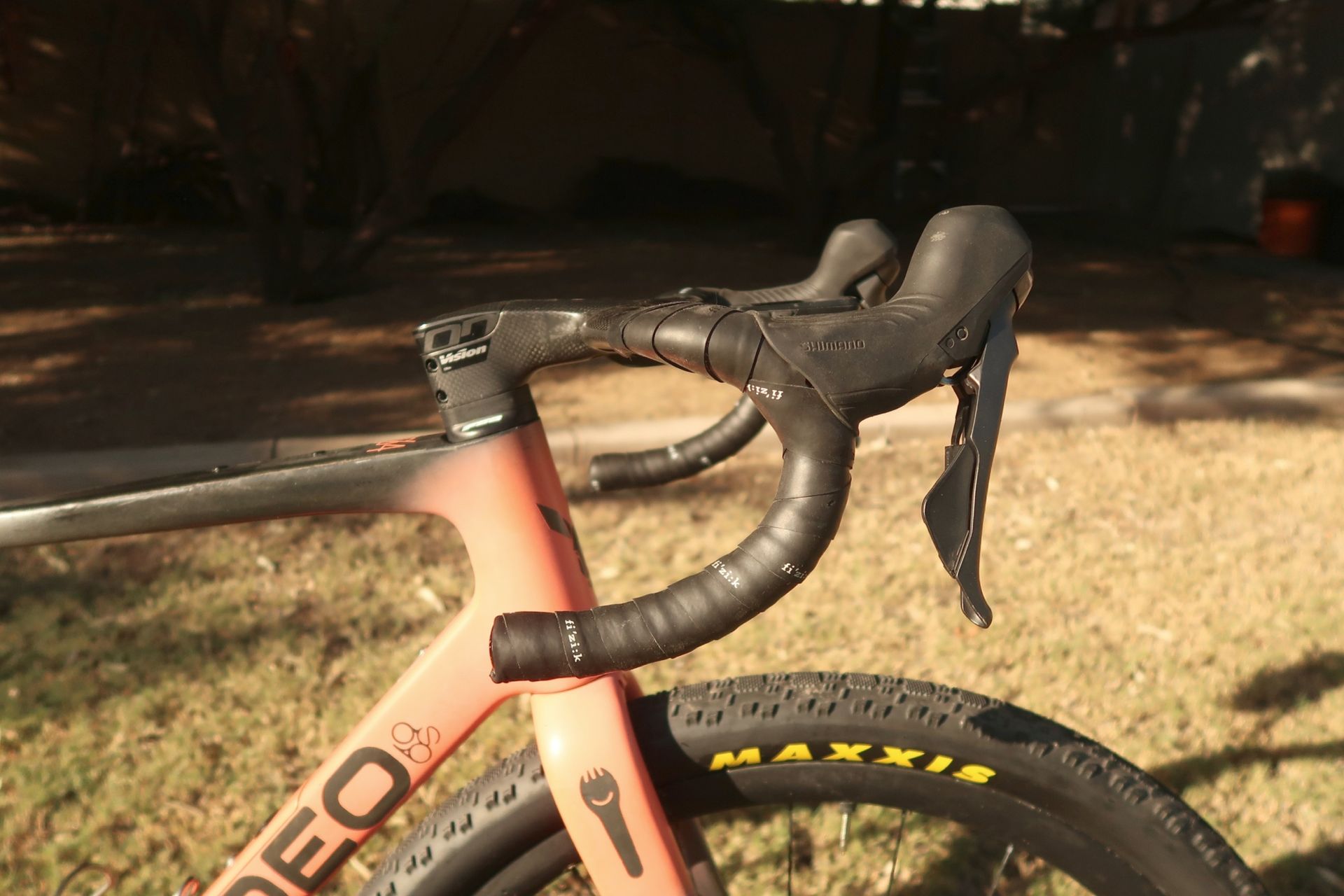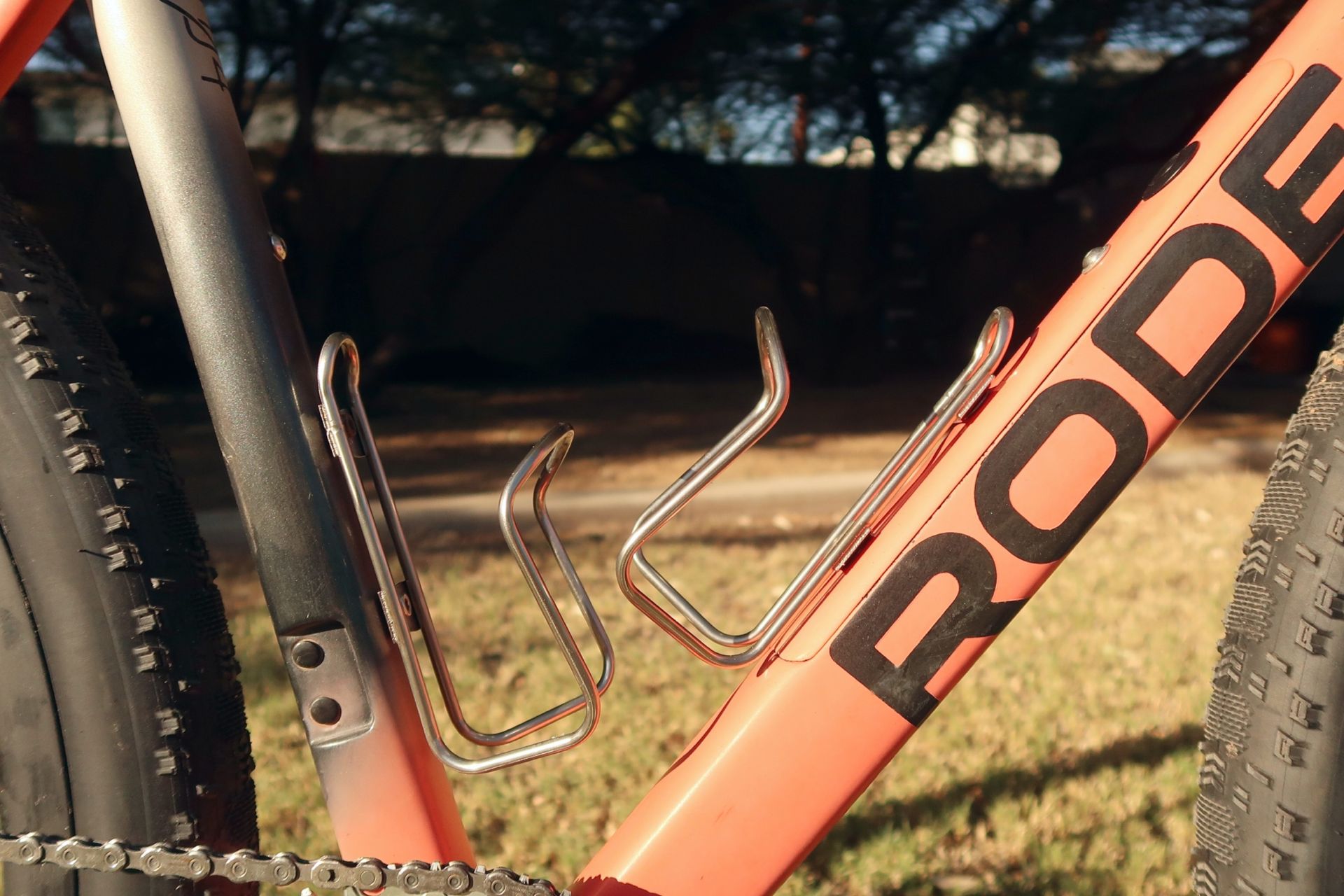Unbound Gravel vs. UCI Gravel: How I'd set up my bike for gravel’s top races
I tried to make the ideal race steed for both ends of gravel cycling spectrum and got wonderfully lost in the details on the way there


Gravel cycling has officially become a professional sport. Few things highlight this transformation more than the significant investment from major brands in R&D in the gravel space, the competitive salaries some riders earn, and the fact that the world’s top cyclists are vying for a coveted rainbow jersey.
Gravel racing has also sparked a new level of tech obsession, with endless debates over the optimal race setup. For the everyday rider interested in gravel, this can be can be both exciting and daunting. There is no single setup that works for every event—there's always a trade-off depending on the next race. The only constant is that nothing is consistent.
Along with the constant changes and experimenting, every geographical region appears to have its own interpretation of what a gravel course should be like, too. When the UCI entered the gravel space in 2022 with the debut of its UCI Gravel World Series and the first-ever UCI Gravel World Championships, it became clear that its interpretation of gravel differed vastly from the highly popular American events like Unbound Gravel. While mountain bike tyres are trending in Kansas, the first UCI Gravel World Championships was won on a road bike.
To explore this divide and offer some tips and inspiration for your own race setup, we've set out to build the ultimate bike that bridges both styles. Let’s dive in.
The separate technical challenges of American and European gravel racing
To start, let's look at the concrete differences between gravel on the two main continents where it is raced. In North America, where the discipline was founded, gravel racing from adventure rides that offer a wide variety of technical challenges and usually boost some serious mileage. With the exception of but a few races, U.S. gravel races are between 100 km and 322 km (200 miles) in length. (If it is longer than 200 miles, it will likely be considered an ultra event.) Additionally, most of these races are somewhat self-supported, which means nutritional and mechanical support for the riders is limited and sometimes not allowed at all.
In Europe, the expectations are different, especially amongst the UCI Gravel World Series. Born from road racing, UCI gravel races must be between 50 and 175 kilometres (31-108 miles) and can either be a circuit race or a point-to-point race. What’s more, the UCI requires frequent feed zones; races over 90km require no less than three feeding points where riders can receive hand-ups. There are no team cars, and riders are still required to fix their own bikes outside of the aid stations.
Most importantly, gravel roads in North America are vastly different from gravel roads in Europe. Europe is a much more densely populated place, which means the technical characteristics of European gravel races are often quick tight turns, frequent changes of terrain, and punchy climbs. In North America, the challenge comes from rough remote roads, bigger climbs, and the possibility of singletrack. Of course, some European races have long climbs and singletrack, and some American races are punchy and change terrain like some of the European races, but generally, geography does play a role.
Get The Leadout Newsletter
The latest race content, interviews, features, reviews and expert buying guides, direct to your inbox!
Big picture comparison
How I'd build my bike for say, Unbound Gravel
One of the joys (or hassles) of gravel cycling is all the fine-tuning that goes into a bike setup. More similar to mountain biking than road cycling, gravel encourages bold swings and specific choices in pursuing technological gains.
For this story, we have kept it simple: one frame, one drivetrain and two very different specs to fill out the other details. Our goal was not only to compare two styles of gravel racing, but also to highlight the customisation options that allow you to personalise your bike and build confidence in your race setup, all while keeping it accessible.
How I'd build my bike to race a UCI event
Here are the full choices of both builds:
| Part | US Gravel | UCI Gravel |
|---|---|---|
| Frame | Rodeo Labs Trail Donkey 4.0 | Rodeo Labs Trail Donkey 4.0 |
| Handlebar | Vision Metron 5D | Vision Metron 5D |
| Seat post | Vision KFX SB0 | Vision KFX SB25 |
| Saddle | Ergon SR Tri Men Mid Titanium | Fizik Vento Argo |
| Groupset | Shimano GRX Mechanical 12s | Shimano GRX Mechanical 12s |
| Chain ring | Garbaruk 44t standard 5-bolt | Garbaruk 50t aero 5-bolt |
| Cassette | Shimano Deore 10-45t | Garbaruk 10-51t |
| Shoes | Shimano S-Phyre SH-XC903 | Fisik Vento Aeroweave Powerstrap |
| Pedals | Shimano XTR SPD | Shimano 105 SPD |
| Wheels | Shimano GRX WH-RX880 | Enve SES 4.5 |
| Tyres | Maxxis Aspen ST 2.25 | Rene Herse Snoqualmie Extralight 44mm |
| Cages | King Cage Steel Lowered | King Cage Steel Lowered |
| Bags | Orucase SB30 | Orucase SB30 |
The dark art of tyre choice
A set of ENVE 4.5s wrapped in Rene Herse Snoqualmie Extralight tyres skewes furthest towards out and out speed on a mixed surface/light gravel course
Everything we thought we knew about tyre selection for gravel has come under much scrutiny over the last years due to one key change in understanding: narrower tyres are not necessarily faster.
Now, that’s not to say that this is a universal rule. Narrow tyres can be quicker, but it also is not always the case. Many other variables influence the speed of a tyre more than simply the millimetres of tyre volume.
In gravel racing, tyre choice may just be the number one pre-race topic, as the choice is extremely course-dependent. Even in these huge U.S. versus UCI race generalisations that I'm making, naming a specific tyre to use for each category would be counterproductive. What I can offer, however, is two alternatives that optimize a gravel bike for either end of the gravel spectrum, assuming the UCI gravel racing is on the tamer end of the scale and U.S. gravel racing is more on the gnarly side.
For UCI racing, with its shorter distances, often controlled lap environments and significant portions of pavement, riders might favour a slick tyre with dramatically more volume. As mentioned earlier, narrower is not faster, but rubber construction and thread count (TPI) do. For me, this theory has rang true with the tyres I've been testing, including the Snoqualmie Extralight tyre from Rene Herse as featured on my build.
Built with a high thread count and weighing just 335g, the Snoqualime Extralight is as fast as it is supple. It creates a dynamic contact point that manages the suspension losses that slow other tyres down. It is 44mm wide, which is very large, but it still retains a decent shape on modern wheels.
The combination of the lightweight, slick tyres and deeper-rimmed road wheels creates a great ride that is fast on the tarmac, agile around corners both on and off the road, and surprisingly smooth when the going gets a bit rougher. That combination is key to the difference between all-road and gravel, but in a relatively smooth off-road environment without large or sharp rocks, it’s undeniably fast.
On many American courses, however, the extra light construction of the Rene Herse tyres is not the right choice, even with its 44mm of width, because everything that makes it fast also makes it susceptible to punctures. There are higher durability casings available from Rene Herse, however these do come with a compromise on weight, suppleness and speed. More and more, riders are looking for a solution that retains the same pliable construction and adds volume to create a system with low suspension losses and more flat prevention.
Mountain bike tyres are the new gravel tyres
The most visible example of this is the popularity of a new Maxxis mountain bike tyre that some of the biggest names in U.S. gravel are using. Both Keegan Swenson and Payson McElveen have leaned into the 2.25-inch wide Maxxis Aspen ST tyres. By all accounts, this isn’t just a sponsor-driven stunt, especially as the likes of Lifetime Grand Prix athlete Dylan Johnson had doubled down on his position that all gravel races should be run on tyres that are two inches or wider.
While the Aspen ST is not slick, the tread is very minimal and it needs some fine tuning before it feels natural as it doesn't act like very many other tyres over loose terrain
If your bike has clearance for such beefy tyres, they do make a lot of sense. On the road, there may be a difference to the sound of the tyre – with its width and small knobs creating both wind and ground noise – but the speed actually only drops on sustained climbing. Off-road, it changes everything as the width and high thread count are incredibly smooth in a straight line. Around technical features, tight turns and rough roads, the tyre is a huge upgrade in comfort and speed versus the slicks mentioned above.
A note about wheel choice
McElveen is one of the gravel athletes who has been on the forefront of the big tire revolution in gravel racing. He uses mountain bike tyres on some Zipp 303 Firecrest wheels.
When running big tyres, the wheel choice is one where there are a few different directions to go. Unlike the UCI build, where slick 44mm tyres can be paired well with deep and wide road wheels, factors like aerodynamics and weight become more murky when working with mountain bike tyres.
From an aerodynamics perspective, the newest gravel wheels, like Zipp's 303 XPLR and Parcours' FKT wheelset, would theoretically be faster. Even with the 2.25-inch tyre width being well over the 105° rule that has typically governed wheel-tyre aerodynamics, which states that the rim must be at least 105% of the width of the tyre to gain aerodynamic benefits.
But deep wheels do have trade-offs, especially when riding over gravel. Cross winds, for instance, can be much more impactful on uneven surfaces of racing. Additionally, adding more rim weight to a relatively heavy wide tyre can change the handling and acceleration. To understand these trade-offs, it is good to look at the pro athletes and what they choose to use at big events. At SBT GRVL, for example, the aforementioned big-tyre fans McElveen and Swenson (who won the race) paired the Maxxis Aspen ST tyres with moderately deep rims. However, McElveen, who is a Zipp-sponsored athlete, chose to run a 303 Firecrest instead of the new XPLR wheels.
After some consideration, I opted to spec my U.S. gravel build with the fairly neutral Shimano GRX WH-RX880 carbon rim. The Shimano offerings are affordably priced for a carbon set, with a moderate outer rim width of 30.7mm, inner width of 25mm, a depth of 32mm, and a total weight of 1,397 grams for the wheelset. If budget weren’t an issue, I might opt for a different wheelset with a 30-40mm depth, however, these dimensions offer the best balance of feel and performance when paired with the large Aspen ST tyres.
Geometry differences
Saddles are one bike component that people rarely change. Even if the type or model of saddle may change from time to time, where that saddle sits is normally fairly locked in. But should it be?
One of the less obvious changes I made on my two bike builds was swapping the seat and seatpost. For the UCI build, the seatpost is a Vision carbon post with 25mm of setback paired with a Fi’z’i:k Terra Argo saddle. For the U.S. build, the seat post is a Vision model with 0 mm of setback paired with an Ergon SR Tri Men Mid Titanium saddle.
I chose the Fi’z’i:k saddle and setback post combination for the UCI gravel build since it is the more traditional fit that distributes the rider's weight neutrally between the front and rear wheels of the bike. This fit is best for riding on drop bars on technical courses as it puts more weight on the rear wheel to gain traction around slick turns. In a pack environment, it also always quicker shifts in weight to produce more agile handling. It is a position that would be closest to what a road racer would want for a short, punchy road race.
The Ergon saddle and straight seatpost were an effort to have a position that is built around a progressive, aerodynamic position borrowed from triathlon racing. The Ergon saddle, in particular, is built around triathletes trying to sit on the front of their saddles for extended periods of time. The same demands are common in U.S. gravel racing due to the long duration of the races, paired with the tendency for the packs to blow to smithereens in the first hour, which means you might find yourself alone without a peloton to draft from.
Naturally, there are physical limitations to what riding position you may be able to adopt, but it's worth considering different saddle and seatpost options for different types of efforts. Just like tyre choices and gear ratios depend on the course, your weight distribution and ergonomic preferences can have a similar impact on your ride.
Recognising the element of uncertainty
Chainrings are easy to swap and if you are set to race a slate of diverse gravel races across a season, having options is crucial.
The final big variable that changes the setup between UCI gravel and U.S. gravel is how the two sides of the sport interact with uncertainty or unpredictability. This, again, relates to big point-to-point races in the U.S. versus the tamer circuit races the UCI puts on. Simply put: the more you know, the bigger swings you can take.
The first area where uncertainty plays a role is in gear choice. In UCI racing, punchiness and speed are key. On road-heavy courses, having big gears and small jumps between the cogs is beneficial in the effort to hold the wheels, stay in the pack and conserve energy for all the micro-efforts that go into a race. That’s why the UCI build sports a 50t chainring from Garbaruck (I have it on an older Quarq five-bolt spider as it is still the simplest 1x power system for swapping chainrings) and a 10-45 Shimano cassette to pair with the Shimano 1x mechanical groupset I have been testing this summer.
While 50t might seem like a big gear for gravel, the size of the chainring offers a huge benefit to the overall drive-chain efficiency. More teeth mean watts are saved through the gained leverage and efficiency of the system – just take a look at the WorldTour time trial setups, and you will see the pivot toward big rings across the board. The same science applies to gravel.
The biggest barrier to running a huge chainring is the fear that you may run out of easier gears somewhere along the course on an important pinch point. Generally, the rule of thumb is to select a gear that will put your chain towards the middle of the cassette for the majority of the time.
In U.S. gravel, that kind of certainty is less easy to find. Courses are not always available to preview, and even if they are, most people don't have time to go scout a 200-mile course. The surface type and condition may also change the gear needs as does the tyre choice. Smaller chainrings are often used with larger tyres because the increase in tyre diameter covers more ground per pedal rotation. By using smaller chainrings, you can maintain a manageable gear ratio, making it easier to pedal despite the larger overall wheel diameter.
When the course is tame enough, I have been enjoying the Fi’zi;k Vento Powerstrap Aeroweave for mixed terrain adventures as it checks all of those boxes.
Other risks that can be taken when a course is well-known are shoe and pedal choices. In a vacuum, road pedals and shoes are objectively faster. The shoes are more aerodynamic, the contact point between the cleat and the pedal is more solid, which offers a more efficient power transfer, and they are often more breathable, which increases comfort.
For the gnarlier stuff, I have enjoyed the RX8 Shimano gravel offering.
But in gravel, there is always a trade-off. As soon as you have to step off the bike, whether it be for mud, avoiding a crash, or walking a particularly technical section, those efficiency gains of road cleats are quickly negated. A good pair of mountain bike or gravel-specific shoes will still have a stiff but walkable sole and traction pads and are, therefore, a better bet if there is any chance of having to dismount.
The universal pieces of kit
Even with the separate characteristics of the races, there are a few common pieces of kit used for gravel races on both sides of the Atlantic. First and foremost: aerodynamic handlebars.
From the outside, this might seem like an arbitrary place to start, but strip away everything else, and the aerodynamic gains from swapping out standard round bars for a more aerodynamic option will always be a benefit. It is one of the few items where there are undisputed gains regardless of rider position, tyre width and frame. The front of the handlebars and how they interact with the wind always matter. Additionally, a well-constructed one-piece bar-stem combination can also improve the ride feel as the shape and cohesive construction can help dampen the road vibrations and offer a small but tangible benefit to the system’s compliance.
The tendency for gravel races to use number plates on the front of the bike does make bars aerodynamics less important, however, there are ways to mitigate that. And I do believe it's upgrade worth considering.
The second universal piece of kit is bottle cages. Bottle cages seem fairly insignificant, but ask any rider who has been at it long enough and they will tell you a horror story about losing a bottle or two due to failing cages. In endurance races where self-sufficiency and nutrition are paramount, cages should never be an afterthought.
The risk of bottle ejection aside, cages can also give you more flexibility for bottle sizes and position. For example, the King Cage steel cages pictured above lower the bottle position, leaving room for a frame bag while still holding tall bottles for hot races.
The third and final universal piece of kit is a saddlebag. Regardless of where you are in the world, if you flat your tyre, you must fix your tyre. Integrated downtube storage covers some of the gear, but to be fully prepared (with things like a tube, derailleur hanger, quick link, and replacement valve core — all things that I have used this year in races), a trusty seat bag is a must. Many of these are light and fairly aerodynamic, as you can see from this Orucase option, which is my personal favourite gravel saddlebag.
* Logan Jones-Wilkins is a freelance journalist and gravel racer who is a long-standing contributor with Rodeo Adventure Labs. The Trail Donkey 4.0 pictured here is Logan’s personal bike and is merely the vehicle for the rest of the story.

Thank you for reading 20 articles this month* Join now for unlimited access
Enjoy your first month for just £1 / $1 / €1
*Read 5 free articles per month without a subscription

Join now for unlimited access
Try first month for just £1 / $1 / €1

Logan Jones-Wilkins is a writer and reporter based out of the southwest of the United States. As a writer, he has covered cycling extensively for the past year and has extensive experience as a racer in gravel and road. He has a Bachelor of Arts from the University of Richmond and enjoys all kinds of sports, ranging from the extreme to the endemic. Nevertheless, cycling was his first love and remains the main topic bouncing around his mind at any moment.
-
 'I want to have success as an elite, not just as a junior' - Cat Ferguson on winning four world titles and starting her pro career
'I want to have success as an elite, not just as a junior' - Cat Ferguson on winning four world titles and starting her pro careerThe 18-year-old, Cycling Weekly's Female Rider of the Year for 2024, tells Tom Davidson about her ‘perfect season’
By Tom Davidson Published
-
One domestic road race can produce equivalent emissions to flying from London to New York and back, twice: the why and how of more sustainable events
Sustainability specialist and road race organiser Travis Bramley set out to discover if his love for cycling could align with his commitment to the environment. Here’s what he found
By Travis Bramley Published
-
 Gravel cyclists aren't all the same: a guide to the climbers, punchers and all-rounders of the dirt roads
Gravel cyclists aren't all the same: a guide to the climbers, punchers and all-rounders of the dirt roadsAs this dynamic discipline establishes itself, so do its archetypes — though the lines remain blurred
By Ryan Simonovich Published
-
 USA Cycling debuts Junior National Series, offering a unique pathway to elite racing
USA Cycling debuts Junior National Series, offering a unique pathway to elite racingFeaturing the biggest races in the US, the new series offers young talent a dedicated talent development and identification pathway
By Anne-Marije Rook Published
-
 Unofficial Gravel Worlds to offer largest single-day prize purse in the discipline: $100,000
Unofficial Gravel Worlds to offer largest single-day prize purse in the discipline: $100,000With a massive prize purse, a focus on world-class race coverage and staying true to its community focus, Gravel Worlds aims to do more than just keep pace with the growing race scene.
By Anne-Marije Rook Published
-
 Opinion: If the UCI Gravel Worlds doesn't have American pros at the front, everyone loses
Opinion: If the UCI Gravel Worlds doesn't have American pros at the front, everyone losesMany of the United States' best gravel professionals are not going to the UCI Gravel World Championships and that is a problem for the whole discipline of the sport
By Logan Jones-Wilkins Published
-
 2024 UCI Gravel World Championships: Van der Poel, Mohorič, Kopecky and Vos lead star-studded peloton in Leuven
2024 UCI Gravel World Championships: Van der Poel, Mohorič, Kopecky and Vos lead star-studded peloton in LeuvenThose who missed out on the rainbow bands in Zurich get a second chance at a jersey. Here's who and how to watch the races
By Anne-Marije Rook Last updated
-
 ‘Nobody cares, work harder’ - how Keegan Swenson muscled his way to gravel dominance
‘Nobody cares, work harder’ - how Keegan Swenson muscled his way to gravel dominanceWith all the big races to his name, he's America’s best gravel racer, and now, he has rainbow stripes in his sight
By Ryan Simonovich Published
-
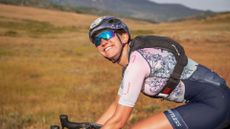 'Road racing is notoriously unfriendly' - how women’s participation in gravel cycling is changing the sport worldwide
'Road racing is notoriously unfriendly' - how women’s participation in gravel cycling is changing the sport worldwide‘In gravel, everyone's welcome! And I absolutely love that and I never want that to change,' says SBT founder Amy Charity
By Caroline Dezendorf Published
-
‘I’m still scared of the distance’ - former Roubaix champion Greg van Avermaet on racing Unbound Gravel and life as a gravel pro
Former Paris-Roubaix champion Greg van Avermaet on conquering Unbound Gravel and life as a gravel pro
By Anne-Marije Rook Published
